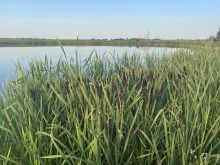It seems clubmoss isn’t so bad after all.
Many producers believe that the common ground cover found on large tracts of rangeland on the southern Prairies inhibits growth and productivity of desirable forages, and has a negative effect on beef production.
But the final report from a three-year project that examined the effect of clubmoss on forages tells a different story.
“Our studies indicate that clubmoss does not reduce soil water, increase plant-water stress or reduce productivity of rangelands,” said Jim Romo of the University of Saskat-chewan’s plant sciences department.
Read Also

Europe holds promise for Canadian lentils
Pulse Canada is trying to help boost lentil consumption in Europe, which is already the fourth largest market.
“Instead, results indicate that the amount of precipitation has far greater impacts on soil water, plant-water stress and forage productivity than clubmoss.”
Clubmoss control threatens biological diversity, Romo said. Control has no effect on soil water or plant-water stress and does not improve productivity or seedling emergence and establishment.
He also said chisel plowing is not economically feasible on rangeland in the brown and dark brown soil zones and cost recovery of discing takes 10 to 24 years under best-case scenarios.
“Therefore, managers may want to maximize the functioning of the water cycle and the ability of plants to access water,” Romo said.
“They may also try to ensure that desired species are allowed to produce seed for regeneration. In short, range managers may find it useful to focus their management efforts on issues other than clubmoss.”
A copy of the final report #19960054 may be obtained by phoning 306-787-5150 in Regina.














